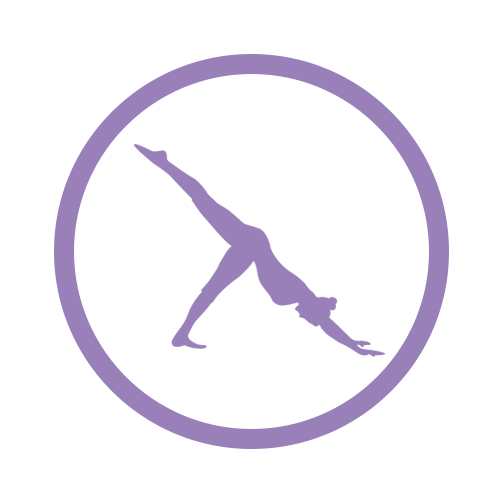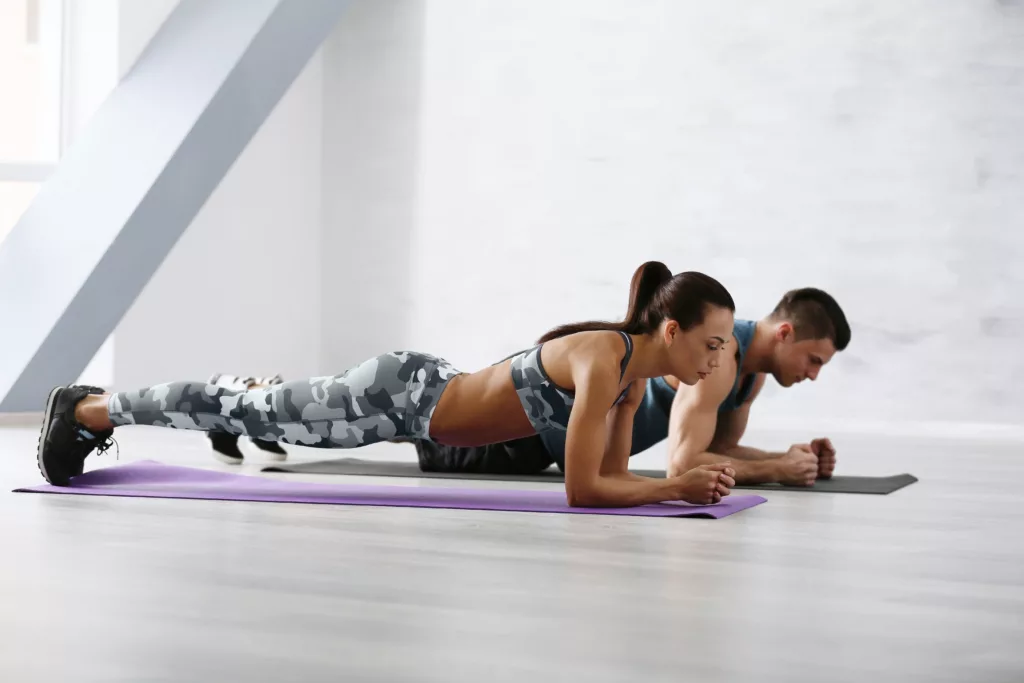
What is a Plank?
A plank is a core-strengthening exercise where you maintain a push-up position, engaging your abdominal muscles to keep your body in a straight line.
What Muscles Do Planks Target?
- Core muscles
- Transverse Abdominis
- Obliques, and erector spinae (lower back muscles).
How To Do a Plank?
To get started with learning how to do plank exercise, follow these step-by-step instructions:
- Set-Up:
- Lie on your stomach, forearms on the ground, and elbows under your shoulders.
- Lift Into Position:
- Push up onto your forearms, creating a straight line from head to heels.
- Hold Strong:
- Keep your body straight, engaging your core, glutes, and legs.
- Breathe and Time:
- Breathe normally and start with 20-30 seconds, gradually increasing.
- Variations and Rest:
- Explore variations like side planks.
- Rest briefly between sets, and enjoy the progress!
Benefits of planking every day
- Balance and Coordination
- Increased Flexibility
- Strengthen Core Muscle
- Reduced Back Pain
- Improved Posture
- Muscle Engagement
- Reduced Back Pain
- Metabolism Boost

Common Mistakes to Avoid While Doing Planks
When performing the plank exercise, it’s important to avoid these common mistakes to ensure proper form and effectiveness:
a) Sagging or Raising Hips:
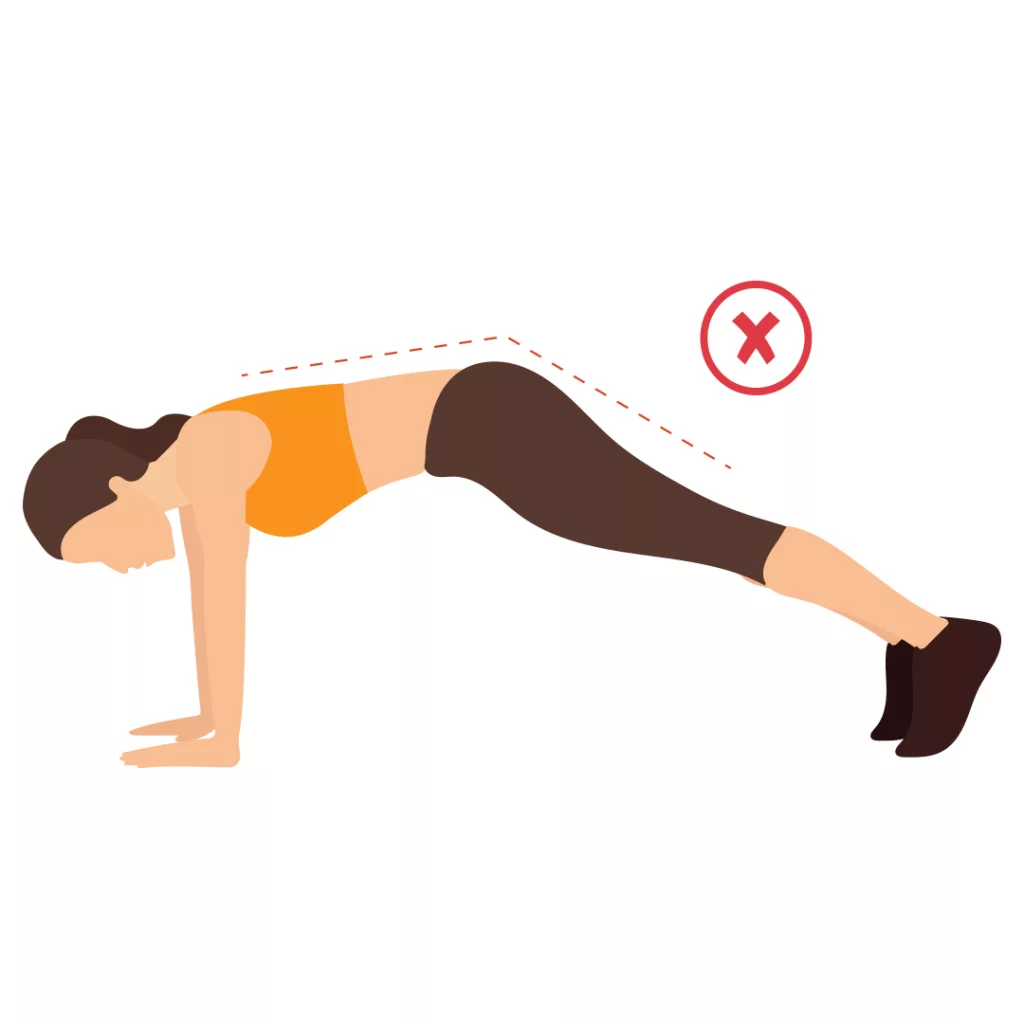
Maintain a straight line from your head to your heels.
Avoid allowing your hips to sink toward the ground or lifting them too high, as this can strain your lower back.
b) Dropping Head:
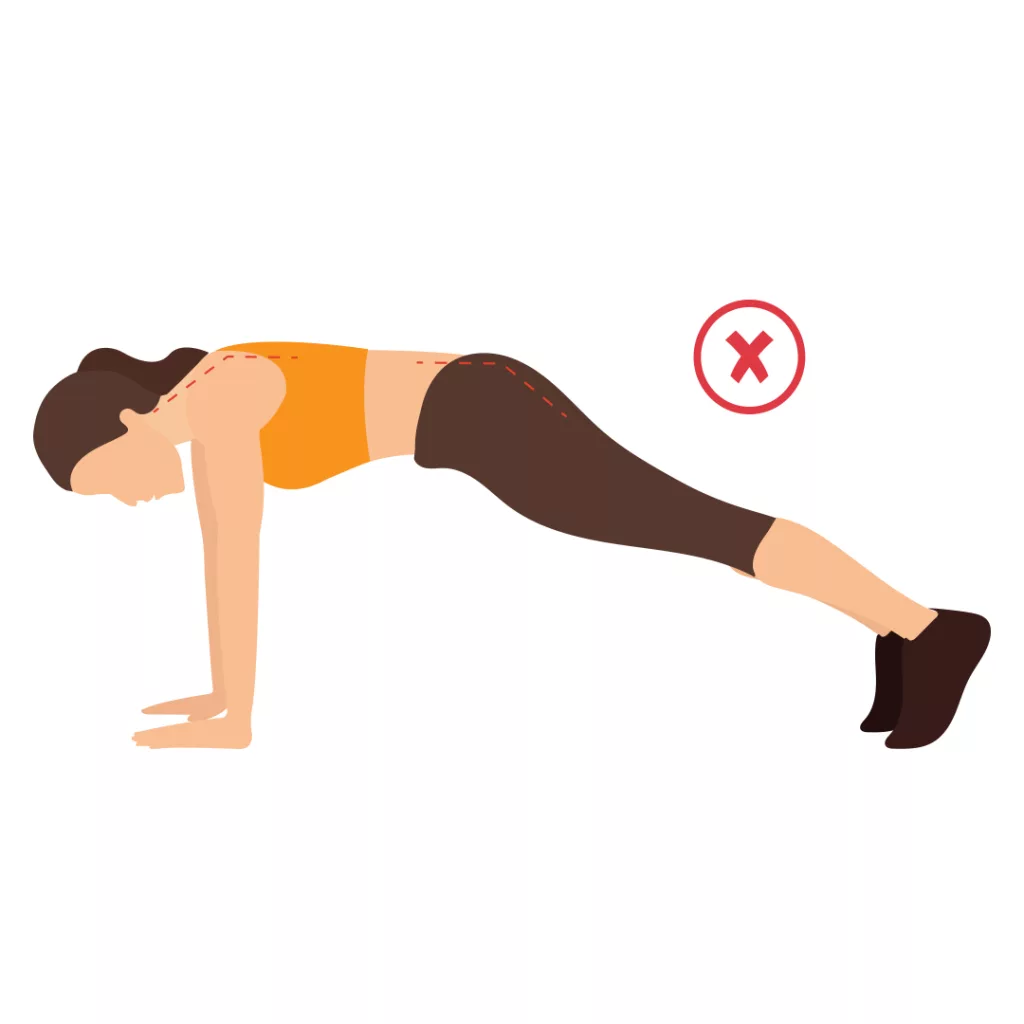
Keep your neck aligned with your spine.
Avoid dropping your head down or craning it upward, as this can lead to neck discomfort.
Some Variations To Try In Plank:
As you become more comfortable with the basic 2 mins! beginners plank workout routine of O’Coach, you can challenge yourself by trying different variations.
Here are a few plank variations for beginners:
a) Side Plank:
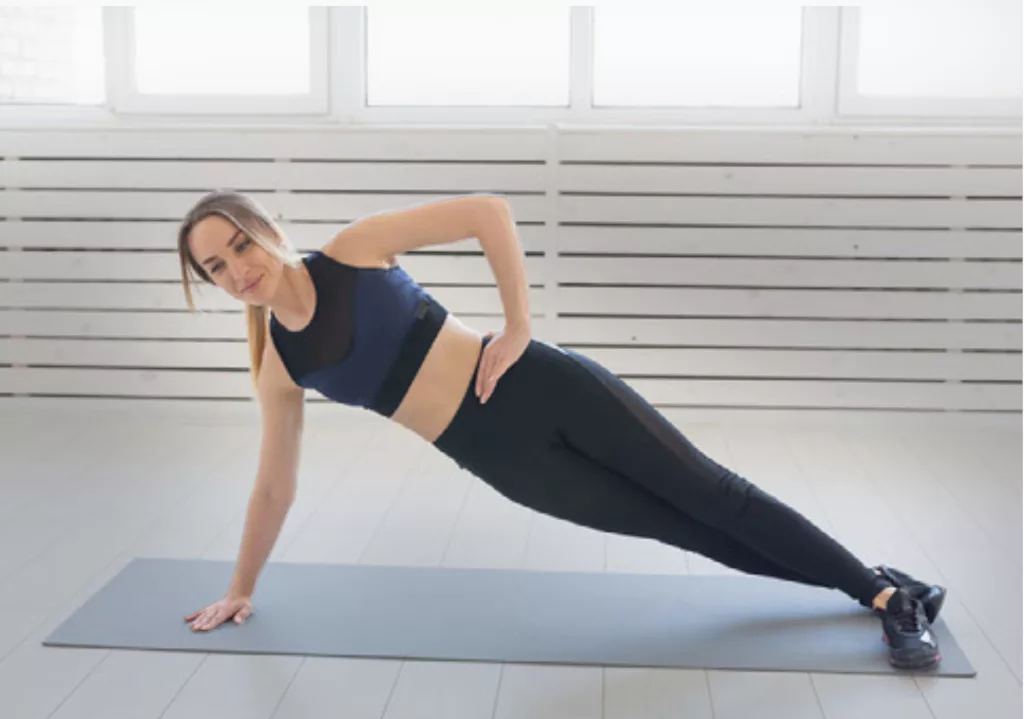
Lie on your side and prop yourself up on one forearm, with your feet stacked or staggered. Lift your hips off the ground, forming a straight line from head to toe. Side planks target the obliques and help improve overall core stability.
b) Plank Shoulder Taps:
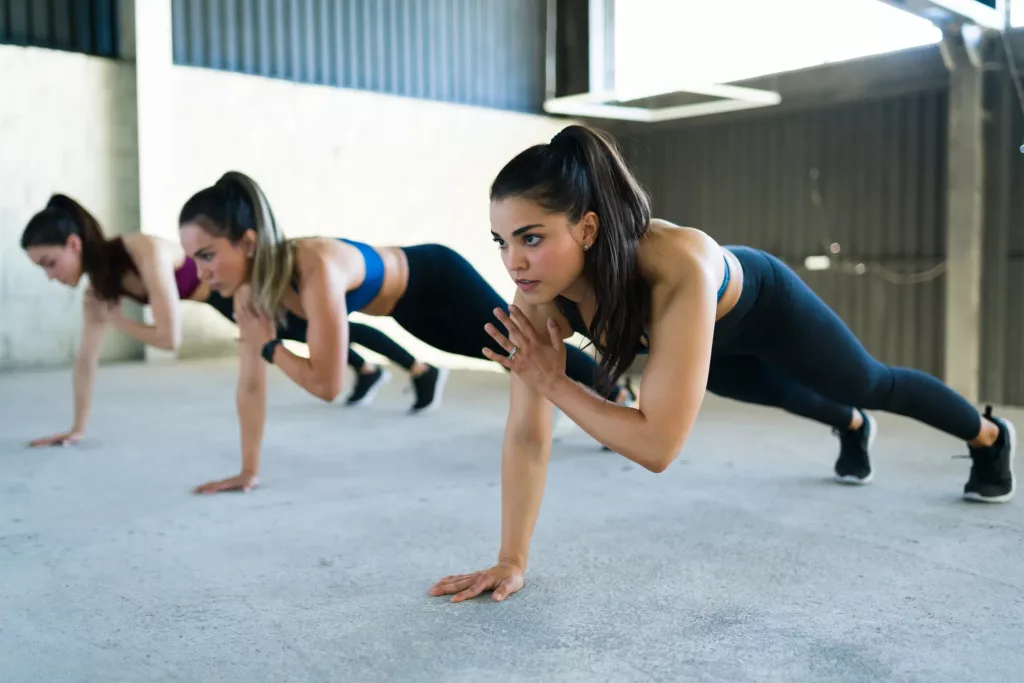
While in a standard plank position, lift one hand off the ground and tap the opposite shoulder. Alternate sides, maintaining a stable core throughout the movement.
Additional Tips for Successful Planking:
➨ Check Your Posture:
As you hold the plank position for longer durations, it’s important to periodically check your form. Watch out for any sagging or raising of your hips. If your form starts to slip, adjust and move back into the correct position. If you find it challenging to maintain proper form without hip movement, it’s advisable to stop and rest.
➨ Time Your Plank:
To monitor your progress and gradually increase your endurance, time your planks with the help of the timer app. Start with creating a custom 20-30 second set of the plank with the help of O’Coach custom timer app and practice it consistently for a week. Then, when you feel ready, extend the duration to 40-50 seconds or longer. There’s no specific time you need to achieve, but being able to hold a plank for 2 minutes or more indicates significant core strength development.
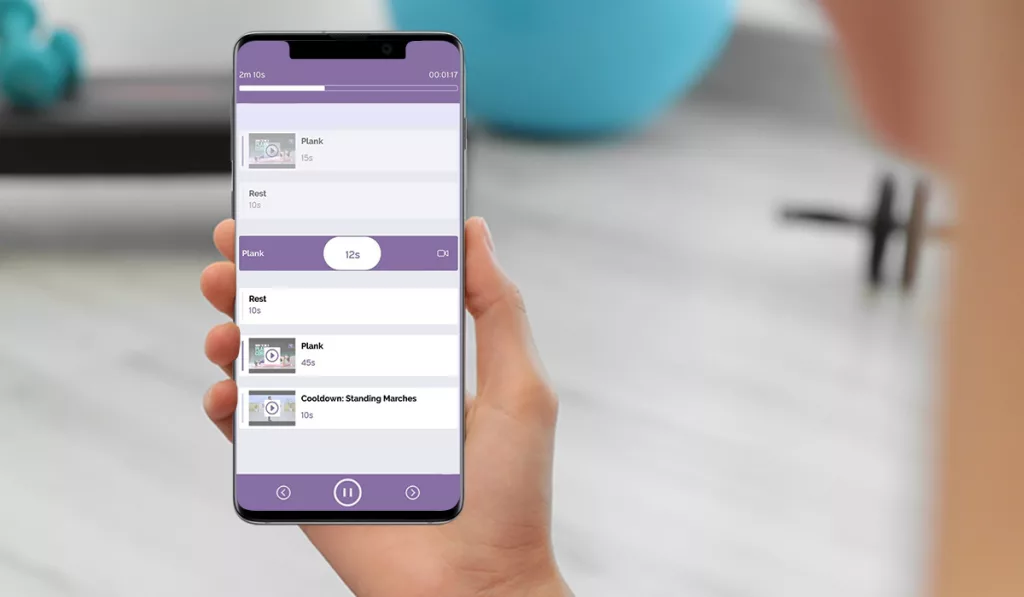
➨ Engage Your Glutes:
Make the most of your plank exercise by engaging multiple muscle groups. In addition to tensing your abs, squeeze your glutes while holding the plank. This helps activate your posterior chain and adds an extra challenge to the exercise, enhancing overall strength-building potential.
➨ Breathe Properly:
It’s essential to maintain proper breathing throughout your plank. Take deep breaths in and out, avoiding shallow or holding your breath. Consistent and controlled breathing helps to provide oxygen to your muscles, aiding in endurance and relaxation.
How many Planks should I do daily?
To get the most out of your planking routine, consider the following tips:
➥ Start with Short Intervals: Begin with shorter plank holds, such as 20-30 seconds, and gradually increase the duration as your strength improves.
➥ Focus on Form: Quality over quantity is crucial in planking. Maintain proper form throughout the exercise, even if it means reducing the duration of your holds.
➥ Incorporate Planking into Your Routine: Add planks to your regular workout regimen 2-3 times per week. They can be performed as part of a full-body routine or as a stand-alone core workout. For beginners it always best if they get started with timer app like O’Coach custom timer app as it lets you create custom workout plan according to your need and preferences. Also, the unique Text to Speech timer engine works like your own personal trainer when you are doing a workout, keeping a track of time for you and continually motivating you. It is designed to help you achieve the maximum efficiency out of any workout session.
➥ Listen to Your Body: If you experience pain or discomfort, especially in your lower back, modify the exercise or seek guidance from a fitness professional.
Conclusion:
Learning how to plank exercise is an excellent way to develop core strength, improve stability, and enhance overall fitness. By following the step-by-step instructions, avoiding common mistakes, and incorporating variations into your routine, you can gradually progress and challenge your body. Remember to start with proper form and gradually increase the duration as you build strength. So, embrace the benefits of planking and make it a part of your fitness journey to achieve a stronger core and a healthier body.
